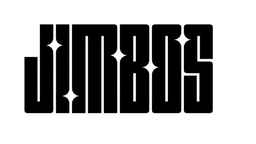The Ultimate Guide to Using Clay Bars and Clay Mitts — When and How to Clay Your Car
Want glass-smooth paint? In this step-by-step guide, I’ll show you when and how to use a clay bar or clay mitt to safely remove embedded contaminants and prep your car for polishing or ceramic spray coating.
If you’ve ever washed your car and noticed the paint still feels rough — even after a thorough wash — it’s time to clay your car.
Claying removes bonded contaminants that regular washing can’t — things like:
- Industrial fallout
- Brake dust
- Rail dust
- Overspray
- Tree sap mist
By removing these contaminants, you create a smooth surface that looks better, feels better, and allows waxes, sealants, and ceramic coatings to bond properly.
In this post, I’ll show you:
- When you should clay your car
- Clay bar vs. clay mitt — which is better?
- Step-by-step process for safe claying
- How to prep your paint for ceramic spray coating after claying
When Should You Clay Your Car?
You don’t need to clay your car every time you wash it. Clay when:
- The paint feels rough after washing (run your hand over it lightly)
- You’re prepping for polishing or ceramic spray coating
- You see embedded contaminants that won’t come off with normal washing
Pro tip: If your car is brand new, you may still need to clay — factory transport and dealership storage can leave contaminants on the paint.
Clay Bar vs Clay Mitt — Which Is Better?
Both tools work well — it depends on your preference and situation:
Clay Bar:
- Traditional method
- More precise — great for small areas or spot treatment
- Single-use — discard if dropped
Clay Mitt:
- Reusable many times
- Faster for large areas
- Safer — if dropped, just rinse and keep going
- Ideal for full paint decontamination before ceramic spray coating
👉 Related Post: How to Use a Clay Bar — Step by Step Guide
How to Clay Your Car Safely — Step by Step
Step 1 — Wash Your Car Thoroughly
Start with a proper wash to remove as much loose dirt as possible. I recommend using:
- The Super Soaper — Use in a foam cannon for a thick pre-soak
- Orange Wash Microfiber Towel — Safe contact wash towel
Step 2 — Use Clay Lubricant
Never use a clay bar or clay mitt on dry paint! Always use a proper clay lubricant or a high-lubricity soap solution (The Super Soaper works great for this).
Spray your clay lube onto a small section of the paint and onto the clay bar or mitt.
Step 3 — Gently Glide the Clay Across the Paint
Using light pressure, move the clay mitt or bar in straight lines — no circular motions. You’ll feel the surface become smoother as contaminants are removed.
Work in small sections (about 2x2 feet), keeping the surface lubricated at all times.
Step 4 — Wipe and Inspect
After claying each section, wipe it dry with a clean microfiber towel and inspect. The surface should feel smooth and free of roughness.
Step 5 — Repeat as Needed
Continue this process panel by panel until the entire car is decontaminated.
Prepping for Ceramic Spray Coating
Once your car is clayed, it’s the perfect time to apply a ceramic spray coating — the paint is now clean and ready for maximum bonding.
I recommend applying Tough As Shell Ceramic Spray — it provides long-lasting protection and incredible water beading.
👉 Related Post: How to Prep Your Car for Ceramic Spray Coating
Recommended Products for Claying and Prep
- The Super Soaper — High-lubricity soap for claying and washing
- Orange Wash Microfiber Towel — Safe wash towel before claying
- Tough As Shell Ceramic Spray — Protection after claying
Conclusion
Claying your car is one of the best ways to take your detailing results to the next level. It removes the contaminants that dull your paint and prevents coatings from bonding properly.
Follow this guide to safely clay your car — whether you choose a traditional clay bar or a modern clay mitt — and enjoy ultra-smooth paint and maximum shine.
Happy detailing!



